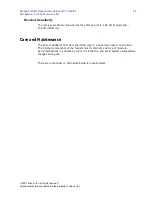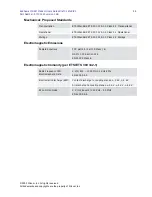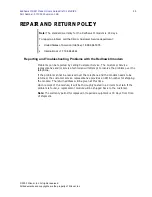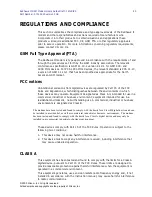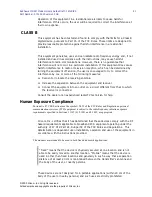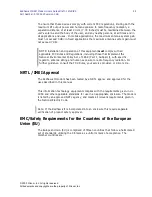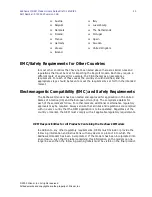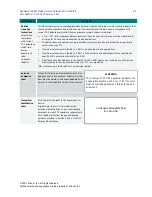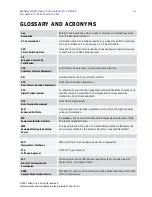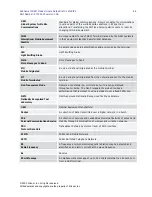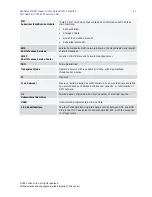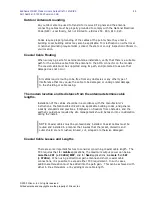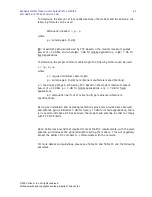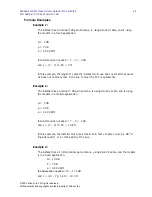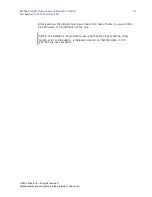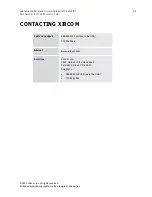
Redhawk II GSM Modem Users Guide
Draft: 10/30/00
50
Part Number: 07100020 version 00B
© 2000 Xircom, Inc. All rights reserved.
All trademarks and copyrights are the property of Xircom, Inc.
To determine the amount of loss needed between the modem and the antenna, the
following formula can be used.
Attenuation needed = g – p
where
g = antenna gain (in dB)
g
= maximum path gain allowed by FCC based on the modem maximum output
power of +30 dBm, and where
p
= 3 dB for mobile applications, or
p
= 7 dB for
fixed applications
To determine the proper minimum cable length the following formula can be used.
L = (g – p) / a
where
L = required minimum cable length
g = antenna gain (in dB; per antenna manufacturers specifications).
p = maximum path gain allowed by FCC based on the modem maximum output
power of +30 dBm, p = 3 dB for mobile applications, or p = 7 dB for fixed
applications
a = attenuation per foot of cable (in dB; per cable manufacturers
specifications).
As long as installation and operating restrictions previously provided are observed,
and antenna gain is limited to 7 dBi for fixed, or 3 dBi for mobile applications, there
is no need to introduce RF loss between the modem and antenna in order to comply
with FCC MPE limits.
Note: Cable loss beyond that required to meet the FCC requirements, with the given
antenna ,will decrease the signal strength reaching the modem. This will negatively
impact the ability of the modem to communicate with the network.
For more details and guidelines, please see Table 12 and Table 13 and the following
examples.

